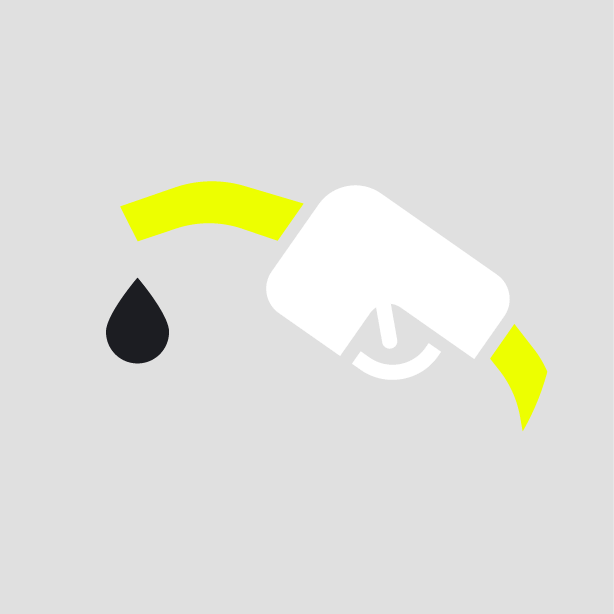-
What happened?
After well testing, workers were preparing to lift a surge tank to load it on to a trailer.
One worker went up the tank to put the slings in the crane hook. The tagline was tied with the surge tank to lift the tank hand free.
The banksman then gave the signal to the crane to lift.
The crane operator could not see that another worker was standing nearby on the other side of the tank.
As the crane was aligning the trailer to load the tank, the worker got caught in between the surge tank and the catwalk.
The worker received fatal injuries to his head and chest.

-
Why did it happen?
Loads were attached to the crane and pre-tensioned, although the area was not cleared for the lift and the crane hook was misaligned with the centre of the load.
Workers were not wearing appropriate high visibility vests.
Not all workers were involved in pre-job safety meetings for lifting activities.
Lifting was considered routine – it was accepted that lifts were done without a lifting plan, or with a generic one.
Crane operators were expected to follow instructions, not to stop and ask questions about the job at hand.
Lack of application of competencies and standards during operations.

-
What did they learn?
Ensure that roles are clearly defined during lifting operations: lifting supervisor, banksman, rigger, slinger.
Strengthen the level of supervision during lifting operations, particularly is part of simultaneous operations (SIMOPS). Deploy additional, fully trained and competent staff to supervise lifting and loading.
Ensure all workers involved in lifting operations are trained and competent to do so.
Ensure that activities are fully clarified before starting a job, and that everyone is aware that they have the right to STOP a job if conditions seem unsafe or change during the activity.
Evaluate the design of the surge tank frame for vertical lift slings so it stays attached in the original position during transportation.

-
Ask yourself or your crew
What are the key roles during lifting operations? How well have we defined those for today’s lifting job?
Do we have a lifting plan in place? Is it specific to today’s job? What should we do if it isn’t?
What other operations are taking place nearby that could be affected by our lifting operations?
Where are the exclusion zones in today’s lifting operation?
Think about today’s job. Describe some situations when you would exercise your stop work authority.
What risk controls or barriers do we have in place to ensure lifting operations are carried out without incidents?

Add to homescreen
Content name
Select existing category:
Content name
New collection
Edit collection
What happened?
After well testing, workers were preparing to lift a surge tank to load it on to a trailer.
One worker went up the tank to put the slings in the crane hook. The tagline was tied with the surge tank to lift the tank hand free.
The banksman then gave the signal to the crane to lift.
The crane operator could not see that another worker was standing nearby on the other side of the tank.
As the crane was aligning the trailer to load the tank, the worker got caught in between the surge tank and the catwalk.
The worker received fatal injuries to his head and chest.
Why did it happen?
Loads were attached to the crane and pre-tensioned, although the area was not cleared for the lift and the crane hook was misaligned with the centre of the load.
Workers were not wearing appropriate high visibility vests.
Not all workers were involved in pre-job safety meetings for lifting activities.
Lifting was considered routine – it was accepted that lifts were done without a lifting plan, or with a generic one.
Crane operators were expected to follow instructions, not to stop and ask questions about the job at hand.
Lack of application of competencies and standards during operations.
What did they learn?
Ensure that roles are clearly defined during lifting operations: lifting supervisor, banksman, rigger, slinger.
Strengthen the level of supervision during lifting operations, particularly is part of simultaneous operations (SIMOPS). Deploy additional, fully trained and competent staff to supervise lifting and loading.
Ensure all workers involved in lifting operations are trained and competent to do so.
Ensure that activities are fully clarified before starting a job, and that everyone is aware that they have the right to STOP a job if conditions seem unsafe or change during the activity.
Evaluate the design of the surge tank frame for vertical lift slings so it stays attached in the original position during transportation.
Ask yourself or your crew
What are the key roles during lifting operations? How well have we defined those for today’s lifting job?
Do we have a lifting plan in place? Is it specific to today’s job? What should we do if it isn’t?
What other operations are taking place nearby that could be affected by our lifting operations?
Where are the exclusion zones in today’s lifting operation?
Think about today’s job. Describe some situations when you would exercise your stop work authority.
What risk controls or barriers do we have in place to ensure lifting operations are carried out without incidents?
Operations were ongoing to lift a surge tank to load it on to a trailer after well testing. The load was being secured when a worker out of the crane operator’s vision became caught between the surge tank and catwalk. The worker received fatal injuries to his head and chest.












